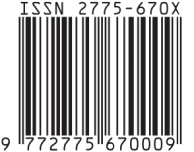The Relationship between Self-disclosure and Pet Attachment in Early Adulthood
Hubungan Self-disclosure dengan Pet attachment Pada Dewasa Awal
Abstract
Early adult pet owners tend to lack self-disclosure because they are afraid of the risk of rejection even to those closest to them. Interpersonal rejection makes individuals emotionally distant and afraid to self-disclose to those closest to them, so they will build more attachment to their pets. This research aims to determine the relationship between self-disclosure and pet attachment in early adult. This research uses a quantitative approach. The method used in this study is descriptive analysis and hypothesis testing, namely Spearman's rho correlation The subjects of this research were 327 dog or cat owners who were in early adult in Makassar City. The sampling technique used was purposive sampling. This study used the Lexington Attachment Pet Scale (LAPS) and the Self-disclosure Scale. Based on the Spearman rho correlation results, it shows that there is a relationship between self-disclosure and pet attachment in early adult (p=0.000<0.05). The correlation coefficient is -0.316 and is classified as a moderate relationship. This research also found that there were differences in levels of self-disclosure and pet attachment based on the length of time they were kept, and there were no differences based on gender. Based on the research that has been conducted, it can be concluded that there is a relationship between self-disclosure and pet attachment in early adults with moderate relationship strength.
Copyright (c) 2023 Indah Cahyani

This work is licensed under a Creative Commons Attribution-NonCommercial 4.0 International License.













